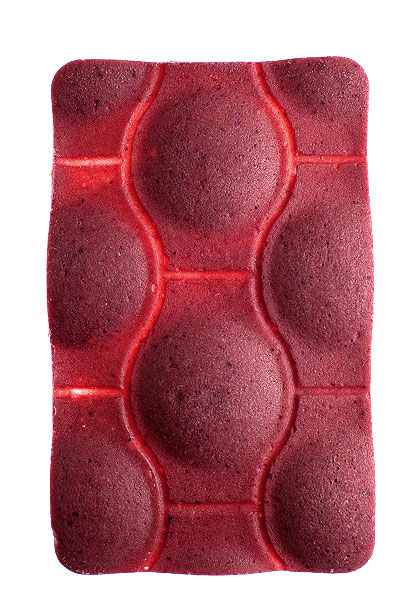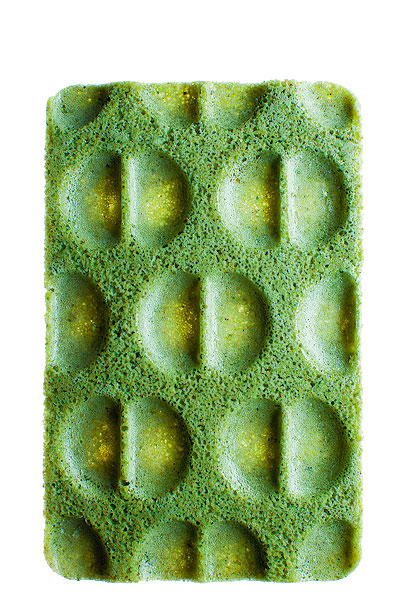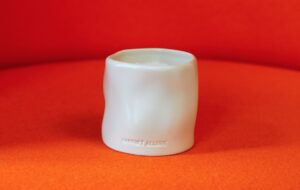|
(images: Pol Baril and Maxyme Delisle) |
||
|
Solid soup and edible plates that are worn like jewellery are two of the latest products created by experimental food designer Diane Bisson. From her kitchen-laboratory in Montreal, Bisson (associate professor of the school of industrial design at the University of Montreal) is developing a range of edible tableware to eliminate wasteful disposable plates and cutlery. But her products are nothing like those horrible plates made of wheat or corn flour that “look like cardboard and taste like cardboard”, says Bisson. “The project is to create something much more aesthetic, more gastronomic, more interesting to taste and to eat with your food or after your food.” Her plan isn’t to make recognisable “plates” at all, but to rethink and transform the way we eat, developing new techniques and rituals around food. Bisson started by developing a range of edible materials that could be turned into complex shapes. The solid soup is a jelly-like substance made using agar, a transparent, tasteless substance derived from algae. That might sound a little off-putting – and when we saw it coming out of the plastic tube being used as a prototype mould, it looked a little unusual – but it can taste just like cool tomato and pepper soup, or an apple and basalmic vinegar salad dressing. It can be moulded into a bowl for salads, and can even hold a hot liquid soup or stew. Other materials developed by Bisson include a flexible, purple, crepe-like substance, which tastes mildly of blueberries, and a crunchy, crisp-like material. The next step is the containers and eating implements. “These are, as much as possible, different to the archetypal round plate that we’ve been used to for 3,000 years,” she says. “They bring some new gestures along, new ways of handling the food and picking up the food, and that also involves creating new textures that are practical for that, that are tactile.” One Bisson creation, for instance, is a carrier for finger-food that is worn on the hand like a ring or a knuckle-duster. But, as she points out, using food to hold food isn’t new – we did it ourselves in the past and it’s still common in other cultures. But Bisson kept it simple when she debuted her creations at Montreal’s Portes Ouvertes design festival in April. She served visitors samples of the materials in fairly conventional shapes. “I don’t want to scare anyone with my project and have people thinking these are crazy gastronomic ideas that cannot be implemented in actual everyday life,” she says. There are plans to bring products to the market, possibly through institutions such as schools at first – Bisson was inspired to begin her research after seeing the mountains of waste produced by her son’s school. And rather than putting the finished edible containers on sale, she might just produce recipes so people can make their own: “I would love to be able to produce moulds for people to cook their own picnic plates.”
“Solid soup” made from agar
Test models of vegetable-based edible receptacles
|
Words William Wiles |
|
|
||
|
Prototype shape for food and drink container |
||




















